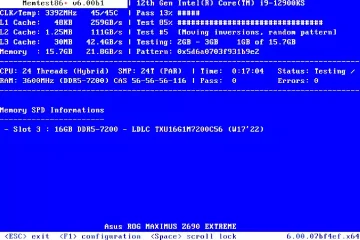The Spectre Vulnerability: A Growing Concern in Cybersecurity

Introduction to Spectre
In the rapidly evolving world of technology, cybersecurity remains a critical concern for organisations and individuals alike. One of the most notorious vulnerabilities identified in recent years is known as ‘Spectre.’ This speculative execution vulnerability affects modern microprocessors, allowing malicious actors to access sensitive information such as passwords and encryption keys. Understanding Spectre is paramount, as it poses significant risks across various platforms, from personal computers to cloud services.
The Discovery of Spectre
Discovered in early 2018 by a team of researchers, including experts from Google and several universities, Spectre exploits a feature known as speculative execution. This feature allows processors to perform tasks ahead of time, improving performance but inadvertently creating security loopholes. Spectre enables attackers to trick applications into revealing confidential data by leveraging the predictability of these operations.
Implications of Spectre
The implications of Spectre are considerable. Since its discovery, many major technology companies and semiconductor manufacturers have faced the challenge of patching affected systems. Google, Microsoft, Intel, AMD, and others have released updates aimed at mitigating the risks associated with this vulnerability. Despite these efforts, Spectre remains a relevant threat, as it shows that cybersecurity must keep pace with rapid technological advancements.
Moreover, Spectre is not limited to a specific operating system or hardware – it impacts a wide range of devices, including smartphones, laptops, and servers. This broad scope makes it crucial for individuals and businesses to stay informed about potential risks and ensure their systems are up to date with the latest security patches.
Preventive Measures
To protect against Spectre, users should regularly update their devices and employ security practices such as using complex passwords and enabling multi-factor authentication. Additionally, organisations should conduct security assessments to understand their exposure and implement robust cybersecurity policies. Training staff to recognise potential phishing attempts and other attack vectors can also significantly reduce the risk of exploitation.
Conclusion: The Future of Spectre in Cybersecurity
In conclusion, as technology advances, so do the methods used by cybercriminals to exploit vulnerabilities like Spectre. Staying informed, vigilant, and proactive in cybersecurity measures is essential in safeguarding sensitive information against evolving threats. As the cybersecurity landscape continues to change, users must prioritise security at all levels to mitigate the risks associated with vulnerabilities like Spectre.







